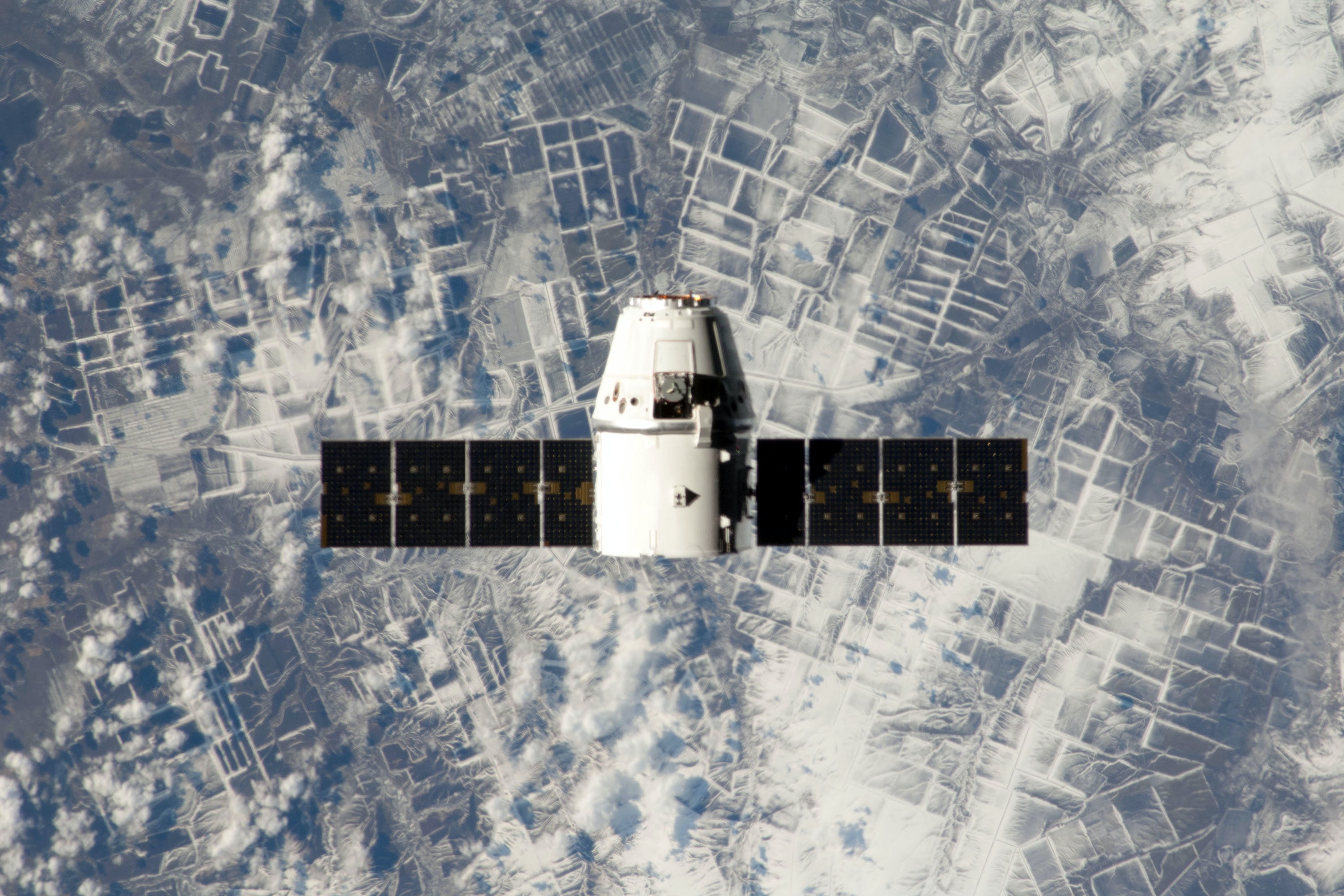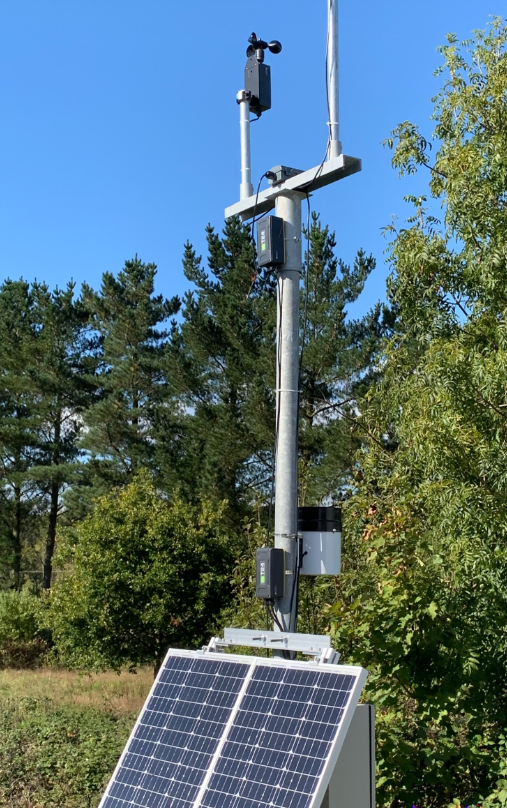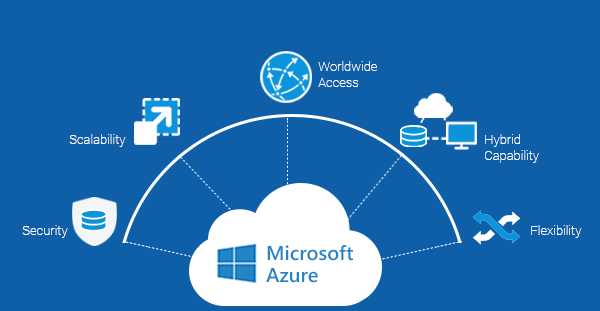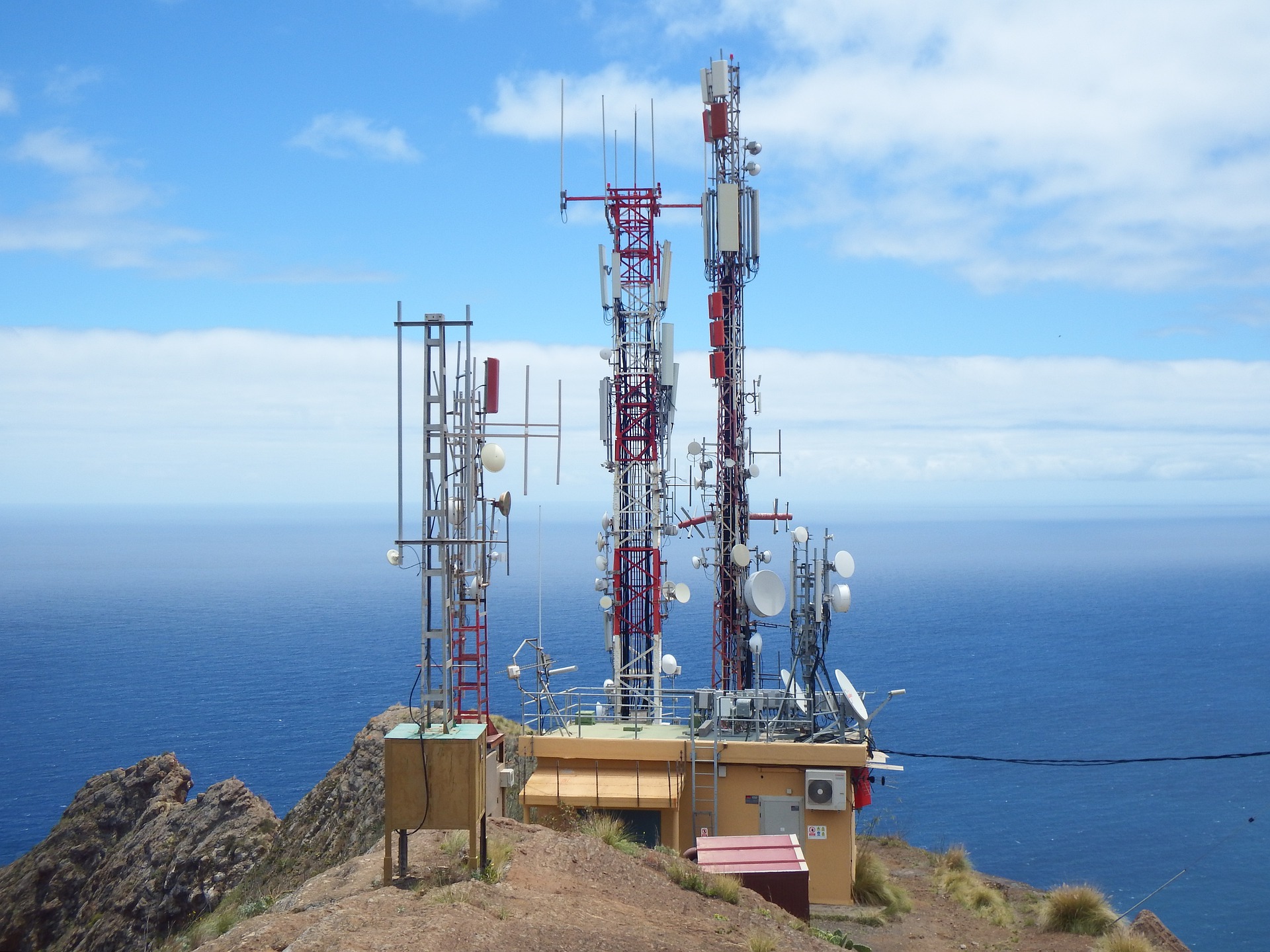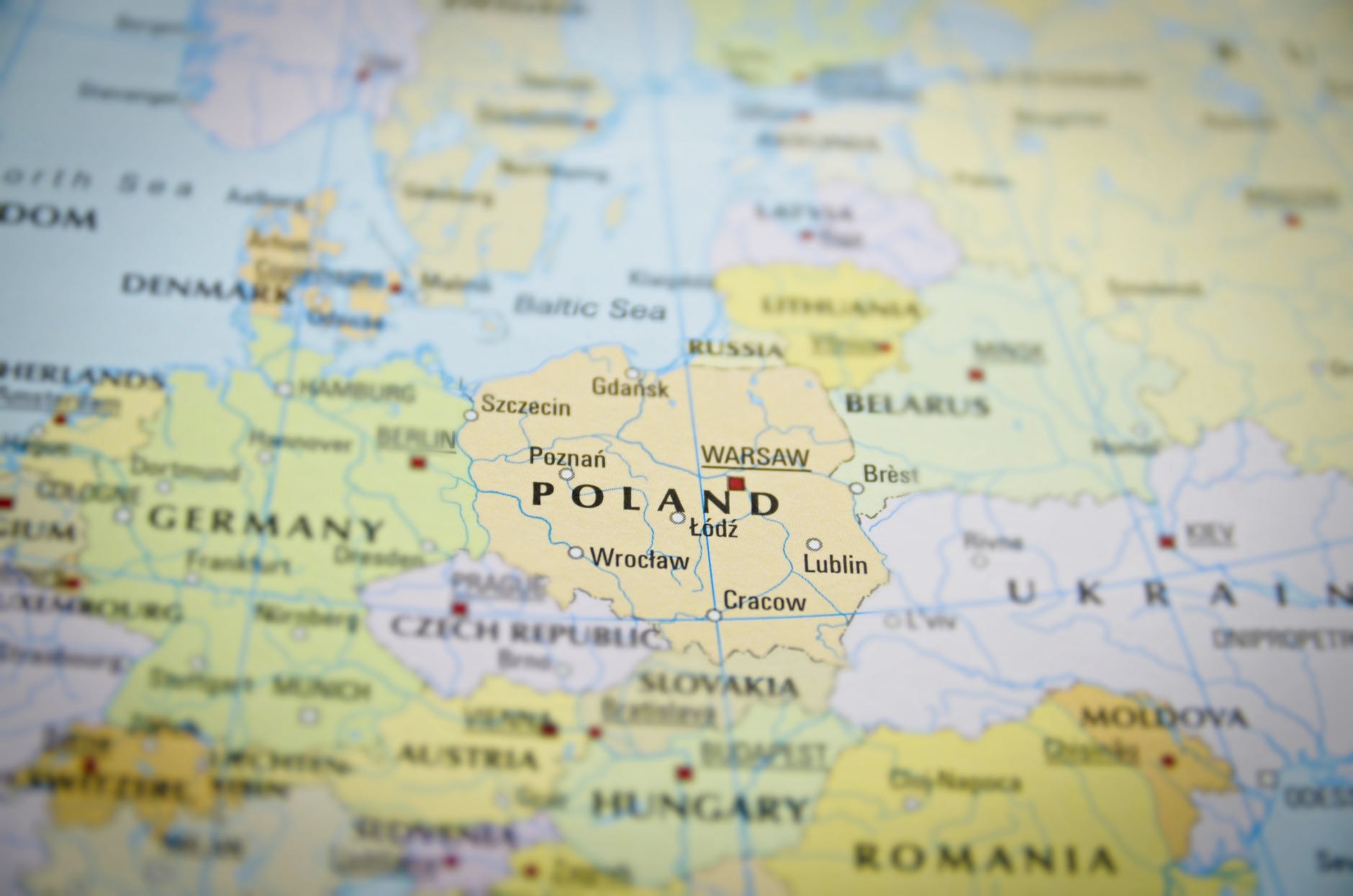Internet
Internet
Networking
Telecoms
Bridging the geographical digital divide
Access to the internet is still an issue for many people across the globe — the most recent data collected by DataReportal revealed that just over 40% of the world’s total population don’t have it. In a world where digitalisation is gaining traction, internet connection is often perceived as an essential utility. So, what’s the deal with rural connectivity, and what should telcos be doing to bridge the geographical divide? Here, Hamish White, CEO of Mobilise, investigates.
Mobile internet access
provides deployment and coverage flexibility that cannot be matched using fixed
broadband, which is typically unaffordable or completely unavailable in rural
areas. Therefore, mobile connectivity is the only feasible pathway to internet
access. However, simply having a mobile phone is no good if the area has no
network coverage, and this is where the problem with rural connectivity lies —
how can telcos connect the unconnected?
Diving into
the digital divide
A digital divide
refers to a scenario where there is unequal access to communication
technologies. It is a multifaceted issue, as those who are not connected can be
split into two groups: the uncovered and the covered but not connected.
The uncovered
population live in an area where there is no mobile network, so even if they
owned a device that could connect them to the internet, there is no
infrastructure in place to enable connectivity. The covered but not connected population
live in an area of network availability but cannot access the internet for a
variety of reasons such as affordability or technology literacy.
Affordability of
mobile access can be split into the affordability of data and the affordability
of devices. The United Nations Broadband Commission has set a global target to
make entry level data services less than two per cent of the monthly income per
capita by 2025. Device affordability is improving due to the increased
availability of lower cost smartphones and smart feature phones such as JioPhone
Next. These are steps in the right direction to empower the rural population to
reap mobile connectivity’s benefits.
Bridging the gap
Operators need to consider how technological
developments could help them to bridge the gap in the long-term while keeping
operations economically viable. Operators need to determine how to reduce the
cost of deploying and operating networks in remote areas.
The challenge lies in backhaul connectivity,
which refers to the portion of the network that links a base station to the core
network. Traditional backhaul connectivity is achieved through microwave
technology or physical full fibre cables, but in rural areas, where there may just
be a handful of people, the distance, terrain, and cost make these strategies
unviable.
Instead, the solution could lie in a low Earth
orbit (LEO) satellite network. LEO satellites offer backhaul connectivity on a
global scale. Instead of connecting each individual small village with microwave
or fibre, a LEO satellite network allows blanket global coverage for backhaul
purposes. LEO
satellites consist of many thousands of satellites orbiting the Earth at lower
altitute, which allows them to offer bandwidth and latency far superior to MEO
or GEO.
Many satellite companies are investing in
this technology in a bid to bridge the digital divide. OneWeb, the UK.gov
backed satellite company, is currently building a global system aimed at
network operators that will be available by the end of 2022, while SpaceX’s Starlink
is sold directly to customers and is already operational across 22 countries
with plans to expand across the world over the coming years.
Selling directly to consumers is rare, but
could this model be the key? Deploying a solution that consists of radio
connectivity via WiFi and mobile combined with a satellite receiver for
backhaul via the LEO satellite network would offer operators a more efficient deployment
model for rural areas. And as LEO satellite networks scale, the economics of satellite
transport costs will also improve. In an increasingly supportive regulatory
environment, perhaps there's a chance that regulators and governments could invest
to support this model as a viable, sustainable, long-term solution to bridge
the digital divide?
Let’s go digital
While eliminating the rural-urban
connectivity gap helps citizens to take advantage of digital services, it's
also worth considering how digital tools can in turn support rural
connectivity. Onboarding remote customers is not a simple task — store
collection or postal delivery are not viable. However, going digital and with
an eSIM solution enables telcos to establish a remote sales process to
instantly onboard their customers directly from their device without any
physical interactions.
eSIM-capable devices are growing in
popularity, although they are typically premium smartphones that are
unaffordable for low-income populations. However, the affordability of eSIM
devices looks like it’s starting to change. Although still within the premium
price range, Apple’s iPhone SE and Google’s Pixel 3a are lowering the entry
point for eSIM adoption. If this trend continues and some eSIM capability is
included in affordable devices, like the JioPhone Next, the entire onboarding
process for rural customers could be done digitally.
eSIMs eliminate the need for a physical SIM card. Instead, device authentication can be enabled by downloading network authentication credentials that can be permanently embedded into a device. Mobilise’s M-Connect white-labelled platform includes its latest offering — eSIM as a Service — which allows telcos to offer eSIMs to customers. In conjunction with network expansion, M-Connect would allow telcos to onboard customers in any remote location without the logistics of delivering any physical components.
In a world
increasingly dependent on technology, bridging the geographical digital divide
has become an urgent issue that needs to be resolved. We are all responsible — network operators, regulators and software
providers — for growing mobile penetration
rates and to ensure the benefits of the internet are available to all,
regardless of their location.
Beatrice - 22 December 2021
Internet
Networking
Three steps for a successful wireless sensor installation
As the number of devices connected to the Internet of Things (IoT) grows, so does the need for reliable yet easily deployable sensors. Luckily, wireless sensor technology is evolving, providing manufacturers with practical and cost-effective solutions to monitor the performance of their equipment. Here Tom Lilly, application engineer at signal conditioning and sensor systems specialist Mantracourt, explains how to achieve the best results from a wireless sensor installation.
Research company Fortune Business Insights predicts that the global market size for IoT-connected devices will reach $1,463.19 billion by 2027, growing at a compound annual growth rate (CAGR) of 24.9%.
Wireless sensors
for precise test and measurement play a central role in this growth — portable, flexible and simple to install,
they allow users to easily gather and analyse data from their manufacturing
equipment. However, to reap the
full benefits of wireless technology, there are a few important steps to follow
during set up.
Undertake a site survey
A sensor’s signal strength and data capture
capabilities should be assessed on-site. To do this, after ensuring that the
sensor is in place and transmitting, the site can be explored with a receiver,
such as one of Mantracourt’s T24 handheld receivers.
This allows users to identify any dead spots
and plan their layout accordingly. It’s important to remember that the ground
can absorb a large portion of the signal, so both the transmitter and the
receiver should be located above ground.
Other obstacles,
such as concrete or brick walls, metal cladding, ironwork, metal meshes up to
100 mm thick, and, surprisingly, trees in leaf that contain a lot of water, can
impact the signal strength. If
additional coverage is required, a repeater can help extend the sensor’s range
and bypass obstacles. It’s also important to consider the presence of
future obstacles that might not be present during the installation — for
example, you wouldn’t want to position a wireless sensor behind a spot where
lorries often park, or along a train track.
Radio interference is usually not a concern,
because licensed low power devices that use transmission formats such as 2.4
GHz are surprisingly tolerant to common interference sources. However, having
multiple sensors can block or slow transmission data, particularly if they are
on the same channel. For this reasons, Mantracourt’s T24 products have an error
checking function to ensure that data is transmitted correctly. As well as
using a clear channel, users can easily configure the rate at which data is
sent to reduce the competition for bandwidth between transmitting sensors.
Extend your sensor’s lifespan
Wireless sensors can spend most of their life in low power mode and activate to record measurements and transmit data when needed, meaning that their internal battery can last for several years. However, in some instances when faster transmission rates are necessary and no permanent supply is available, manufacturers can use a solar panel or energy harvesting system such as Mantracourt’s Power Pack 1 and Solar Panel 1.
For sensors that operate in particularly harsh
environments, an enclosure can prevent damage from water or aggressive
chemicals. This is why each of Mantracourt’s wireless transmitter modules can
be ordered in one of three IP rated enclosures. When choosing or designing an
enclosure, it’s important to remember that the radio signal will need an
aperture to escape, such as a small fiberglass window. Users should also
remember to tighten up any cable glands and use a drip loop when connecting
cables to sensors, transmitter and repeaters to prevent moisture from entering.
Think about your data
Storing raw data locally is simple but limits live analytical capabilities. However, thanks to cloud-based remote monitoring platforms like SensorSpace data can be analysed in real-time, allowing you to quickly identify trends and take action when needed. SensorSpace can be used to remotely monitor the live feed from Mantracourt’s T24 wireless telemetry system 24/7, facilitating on-going customer support. Furthermore, the system can be configured to send direct push notifications via SMS and email where necessary.
Following these steps, manufacturers can
easily measure variables such as linear movement, wind speed, temperature,
loads or torque. The flexibility and ease of installation of wireless sensors
means that data can be collected efficiently and cost-effectively, saving money
and improving processes in the long run. Also, it allows for more flexibility
in ongoing projects where you might only begin with a small number of sensors
and increase this down the line. In these situations, you can easily add more
wireless sensors, connected to the cloud-based monitoring system, without the
need for costly and disruptive cable installations.
Beatrice - 24 May 2021
Infrastructure Management
Internet
Networking
News
Software & Applications
Telecoms
New laws to wipe out rural mobile 'not spots'
Mobile signal blindspots will be wiped out under government plans to level up rural areas with better connectivity and unlock tech innovation in the countryside.
The government is proposing law
changes to boost ongoing efforts to improve connectivity for people who
live, work and travel in rural areas.
The reforms will remove one of
the biggest barriers to better coverage in the countryside by reducing build
time and costs for new infrastructure while protecting rural areas by
minimising any visual impact.
Under the proposals, mobile
companies will be allowed to make new and existing masts up to five metres
taller and two metres wider than current rules permit. This will increase the
range of masts and allow operators to fit more equipment on them so they can be
more easily shared.
The move will turbocharge the
delivery of the £1 billion Shared Rural Network being built to eliminate 4G
mobile ‘not spots’ in the countryside and will speed up rollout of
next-generation 5G networks.
It will incentivise mobile
firms to focus on improving existing masts over building new ones, with fewer
new masts needed for rural communities to get a better signal now and to take
full advantage of future 5G-connected technology. This includes innovations in
remote healthcare, self-driving vehicles and smart devices such as fridges, TVs
and heating systems.
Stricter rules will apply in
protected areas, including national parks, the Broads, conservation areas,
areas of outstanding natural beauty and world heritage sites.
The plans also include proposals
to bring better mobile coverage for road users by allowing building-based masts
to be placed nearer to highways.
The news comes as industry
experts and academics set out recommendations on how to reduce the UK’s
reliance on a small number of equipment vendors in the telecoms supply chain.
Digital Secretary Oliver Dowden says: “We want to level up the country and end the plague of patchy and poor mobile signals in rural communities.
“Today we are setting out plans to make it easier for mobile firms to transform connectivity in the countryside and propel villages and towns out of the digital dark ages - providing a welcome boost for millions of families, businesses and visitors.
“These practical changes strike a careful balance between removing unnecessary barriers holding back better coverage, while making sure we protect our precious landscape.”
Most new masts will still need
to be approved by local authorities, which will have a say on where they are
placed and their appearance. Robust conditions and limits will remain in place
to make sure communities and stakeholders are properly consulted and the
environment is protected.
Hamish MacLeod, Director of Mobile UK, states: “We welcome the proposals set out in this consultation which will provide better certainty and flexibility to technological changes required to build world-class mobile networks. We urge the Government that to assist mobile companies to meet its ambitions targets for deployment, it brings about legislative change as quickly as possible.”
A joint technical consultation between the Department for Digital, Culture, Media and Sport (DCMS) and the Ministry for Housing, Communities and Local Government (MHCLG) has been published today with details of the changes. It follows an earlier consultation in 2019 on the principle of the reforms.
The consultation seeks views on
reforms to permitted development rights in England:
Existing mobile masts to be strengthened without prior approval, so that they can be upgraded for 5G and shared between mobile operators. This would allow increases to the width of existing masts by up to either 50% or two metres (whichever is greatest), and in unprotected areas allow increases in height up to a maximum of 25 metres (previously 20 metres). Greater increases will also be permitted subject to approval by the local authority.
New masts to be built up to five metres higher - meaning a maximum of 30 metres in unprotected areas and 25 metres in protected areas, subject to approval by the planning authority.
Greater freedoms for slimline ‘monopole’ masts up to 15 metres in height, which are less visually intrusive than standard masts and used for 5G rollout, in unprotected areas. This could mean operators notifying local authorities of their intention to proceed without needing prior approval. This would align it with current rights that telecoms operators have for telegraph poles.
Building-based masts to be placed nearer to highways to bring better mobile coverage to road networks, subject to prior approval, and in unprotected areas smaller building-based masts to be permitted without prior approval.
Cabinets containing radio equipment to be deployed alongside masts without prior approval and to allow greater flexibility for installing cabinets in existing compounds - fenced-off sites containing masts and other communications equipment - to support new 5G networks.
DCMS will also lead on a new
code of practice for mobile network operators. This will provide updated
guidance on how operators and local authorities can work together to build
communications infrastructure the country needs. It will also contain best
practice for the siting of new infrastructure, particularly in protected areas,
and ensuring stakeholders are properly consulted.
The consultation will run for
eight weeks and closes on 14 June 2021.
Telecoms Diversification
Taskforce - final report
Led by former BT boss Lord
Livingston of Parkhead, the Telecoms Diversification Taskforce was set up by
the government to provide independent advice on how to boost competition and
innovation in the UK telecoms market and build an open, sustainable and diverse
supply chain.
It follows the government’s
decision to remove Huawei equipment from UK 5G networks by 2027. While
necessary to protect national security, it means the UK will be reliant on only
two other 5G equipment suppliers: Nokia and Ericsson.
The taskforce’s report will support the government as it delivers its £250 million Diversification Strategy, mitigating the resilience risks to 5G networks ahead of the 2027 deadline so people can have confidence accessing the economic and social benefits brought by 5G. It recommends:
Working through telecoms standards-setting bodies to encourage best practice in security and open networks;Creating the right environment for diversification through policy interventions - for example, setting out a timetable for the winding down of 2G and 3G networks to support the entry of new vendors into the UK market; Identifying interventions and investment to accelerate the development and adoption of Open Radio Access Network technology, including setting up a fund for developing new products and ensuring testing facilities such as the UK Telecoms Lab and SONIC meet industry needs;Identifying opportunities to invest in long-term research and innovation to build UK capability for current and future generations of telecoms technology.
Now the taskforce has completed
its work, the government will study the findings and respond fully in due
course.
Matt Warman, Minister for Digital Infrastructure, says: “Our £250 million strategy will unleash a wave of innovation across the UK and make sure companies have a wide range of revolutionary 5G technology to choose from that is trusted and secure.
“I welcome today’s report from the Telecoms Diversification Taskforce. It will be instrumental in helping us prepare our networks for next-generation mobile technologies. We will now consider its recommendations and respond in due course.”
Lord Livingston of Parkhead, Chair of the Taskforce, comments: “It has been a privilege to lead the Taskforce and help drive forward the government's important work to diversify the telecoms supply chain and reduce reliance on high-risk vendors.
“The government’s Diversification Strategy set out a clear ambition and the Taskforce has suggested concrete actions and policy recommendations to help it meet its aims.
“The UK now has the opportunity to create a more diverse network and be an international leader in the adoption of next-generation network technology. This will present substantial opportunities for UK based suppliers and users alike.
“I would like to thank all of the Taskforce, made up of an outstanding team of experts from industry and academia, for their commitment and expertise in producing this report.”
Beatrice - 20 April 2021
Cloud
Internet
News
Node4 achieves Microsoft Azure Expert MSP status
Cloud-led digital transformation Managed Services Provider Node4, has announced it has been awarded Microsoft Azure Expert MSP status, one of only nine UK organisations to receive this accreditation.
Node4 is committed to helping customers at every stage of
their cloud migration journey. This award – which also recognises Node4’s
expertise in Azure DevOps and mature Azure Service Tiles approach – marks a key
validation point for Node4’s capabilities, skills and expertise in delivering
services across the complex technologies built on the Azure cloud.
Harnessing the power of Azure, Node4 delivers services
across a truly hybrid platform, with extensive capabilities across Azure public
cloud as well as services deployed in its own UK-based data centres. By
augmenting expert services for Azure public cloud customers across its
unparalleled end-to-end IT infrastructure and comprehensive portfolio of
services, Node4 ensures its customers benefit from the most effective and
flexible application of technology.
Inclusion in the Microsoft Azure Expert MSP program is
awarded to partners that meet a stringent set of requirements, including
verified proof of excellence in customer delivery and technical expertise, and
the successful completion of an independent audit of their managed services,
people, processes, and technologies. Only the most high-fidelity cloud managed
service providers are awarded the Azure Expert MSP badge, intended to give
customers confidence when selecting a partner to help them meet their digital
transformation goals.
“We are thrilled that Node4 has been awarded Microsoft Azure Expert MSP Status,” says Paul Bryce, CCO at Node4. “Not only does this award validate Node4’s capabilities in Azure services, but it reflects the hard work our team is doing to provide an excellent service experience and mature transformation journey for our customers,” continued Bryce.
James Chadwick, Interim General Manager - Commercial Partner at Microsoft, adds, “We welcome Node4 to the Microsoft Azure Managed Services Provider (MSP) program. We look forward to continuing to partner with Node4 to support our customers in their cloud transformation journeys.”
Becoming a Microsoft Azure Expert MSP further strengthens
Node4’s position as a trusted Microsoft partner, adding to its historic list of
being a Microsoft Tier Cloud Service Provider (CSP) Direct Partner and Cloud
Adoption Framework (CAF) Ready Partner. Additional Microsoft certifications
include: Gold Cloud Platform; Gold Data Analytics; Gold Application
Development; Silver Cloud Productivity; Silver Datacentre Solutions; Silver
Small & Midmarket Solutions; and Silver Security.
Beatrice - 12 March 2021
Data
Infrastructure
Infrastructure Management
Internet
Network Storage
Software & Applications
MediaTek, Swisscom, Ericsson and OPPO enable 5G carrier aggregation
MediaTek has announced it has reached a 5G carrier aggregation (CA) and Voice over New Radio (VoNR) milestone in collaboration with Swisscom, Ericsson and OPPO, advancing 5G networks across Europe.
Through this
joint initiative, 5G CA between frequency division duplex (FDD) low band and
time division duplex (TDD) mid band was achieved in both Non-Standalone (NSA)
and Standalone (SA) network architectures. FDD was deployed simultaneously with
LTE using the same spectrum resources and utilizing the Dynamic Spectrum
Sharing (DSS) technique. Aggregating the FDD band with its wider coverage
capabilities together with the TDD band will help to extend the coverage of the
higher peak rate capabilities of the TDD band and increases network capacity.
FDD-LTE and FDD-TDD are both important in paving the way for 5G SA deployment,
ensuring a seamless 5G user experience and extended capacity.
“As a 5G innovation pioneer, MediaTek has a long history of working with Swisscom, Ericsson and OPPO on 5G to usher in this new era of ultra-fast connectivity,” says JS Pan, General Manager of Wireless Communication System and Partnership at MediaTek. “This is just the beginning of the 5G SA journey in Europe and MediaTek is committed to bringing it live to its full extent. We are prepared to meet the increasing demand in new 5G services and applications. Our Dimensity series of powerful and energy-efficient 5G SoCs are designed to support NR CA across multiple configurations, as well as native VoNR support, to ensure a seamless user experience.”
VoNR
represents a major step towards the migration to 5G SA systems. This will allow
OEMs to bring innovative new services to market. With SA networks, 5G
applications will be able to go beyond enhanced Mobile Broadband (eMBB) targets
of high data throughput to meet the ultra-low latency and reliability
requirements of mission-critical use cases and enable next generation of
massive IoT deployment.
Both
accomplishments were made on Swisscom’s commercial 5G network using Ericsson’s
network infrastructures including its RAN, Core Network and IMS solutions.
Additionally, the milestones were reached on commercially available OPPO Reno
4Z 5G devices powered by MediaTek’s Dimensity 800 SoC and MediaTek Dimensity
1000+ SoC test user equipment (UE).
“In our labs we are showcasing that the technologies we invest in today will benefit our customers tomorrow. This was confirmed again recently with Swisscom topping the latest Umlaut Connect best network test in Switzerland for the fourth year in a row,” comments Christoph Aeschlimann, Chief Technology and Information Officer at Swisscom. “The future of 5G services will be centred around 5G standalone networks, and by investing in 5G standalone, we are also investing in new opportunities for Switzerland, such as through network slicing and dedicated on-premises 5G deployments.”
“Through this joint initiative, we’re taking another big step towards the commercialization of 5G standalone networks in Europe,” adds Maggie Xue, President at OPPO Western Europe. “As 2021 will be a pivotal year for accelerating 5G rollouts, we’re eager to bring the best 5G experiences to European consumers with the help of MediaTek, Ericsson and Swisscom.”
“Bringing 5G standalone to the market requires a strong collaboration with our customers and partners. This latest achievement using industry-leading solutions like 5G carrier aggregation is an important step towards realizing the full benefits of 5G,” concludes Hannes Ekström, Head of Product Line 5G RAN, Ericsson. “Ericsson is proud to drive the innovation in this area together with MediaTek, Swisscom, and OPPO. We are enabling a reliable, secure, and flexible 5G standalone architecture that will push Europe’s digital transformation forward.”
Beatrice - 27 January 2021
Internet
IT
News
Software & Applications
Techbuyer partners Digital Access For All charity launch
Techbuyer is supporting the Digital Access For All by the charity The Learning Foundation initiative with other select ADISA members. The nationwide campaign, delivered through the ADISA Marketplace, will ensure secure the processing of thousands of corporate donations and facilitate large scale redistribution of grade A equipment for disadvantaged families across the UK.
With many schools relying on at least partial delivery of learning through the internet and internet enabled devices, it is vital that these resources are available to all. However, around 1.5 million school children have either limited or no access to these at home and are seeing their education suffer as a result. Remote learning during isolation periods, lockdowns and for homework is increasingly part of the norm. Children whose only access to this is via a parent or guardian’s mobile phone are hampered in their ability to get the most out of this, either because of lower functionality on a mobile device or because there is limited facility for essay writing and developing ideas.
National charity The Learning Foundation launched the new initiative of Digital Access For All this year in order to level the digital playing field for children and young people across the UK. It has also established the Digital Poverty Alliance to address digital exclusion and data poverty across the board. The latest phase towards this end is a programme to encourage businesses to donate their redundant IT to those who need it most. The charity is partnering ADSIA, listed on the National Cyber Security Centre’s guidance for the disposal of infrastructure, to deliver the programme via the ADISA Marketplace.
https://youtu.be/c5gu4ggI9_Y
“I am delighted to be working with ADISA and their partners on this hugely important initiative. The fact that donating companies can be assured of the highest level of integrity and standards combined with them also being able to help directly in enabling disconnected children and families to get online makes this a genuine win-win,” says Paul Finnis, CEO Learning Foundation and Digital Access for All.
The ADISA Marketplace uses a limited set of approved IT
Asset Disposition companies to process donations to the highest standards and
generate the best return on these for the charity. The Marketplace offers the
opportunity to fulfil the need for grade A PCs, laptops and monitors to
organisations who apply for the charity for help.
“This is a really
worthwhile project to be involved with and Techbuyer has fully supported its
development from the early stages. ADISA is known throughout our industry as
the gold standard for compliance and best practice so we knew that the project
would be well run and deliver the most value for people who need it the most.
One of the challenges with corporate donations is that they sometimes include
equipment which is not in the best shape, the approached devised for this
initiative works around this issue to maximise equipment that can be donated
and reused. We are very proud at Techbuyer to have been asked to be a part of
this” Mick Payne, Techbuyer Managing Director.
Beatrice - 6 January 2021
Data
Infrastructure Management
Internet
Network Storage
Software & Applications
Kao Data Partners with Vorboss, offering Specialist Low-Latency Connectivity for Fintech
Kao Data, has today announced a new partnership with Vorboss to expand its low-latency, resilient connectivity capabilities at its Harlow campus. Vorboss, a leading London-based connectivity provider is continuing to engineer its fibre network, which offers resilient high-capacity connectivity across the UK and into Europe.
Kao Data’s Open Compute Project-Ready (OCP) data centre design provides Vorboss with a strategic Point of Presence (PoP). Their direct fibre connection offers increased resilience for end-users with even the most complex of requirements using direct links from London’s financial hubs to the UK Innovation Corridor and into all European metropolitan cities. The collaboration offers superior connectivity alongside high density, scalable HPC environments of 25kW and above to cater for AI applications delivering quant and grid computing.
“Financial data science is a complex and high-growth market sector, requiring data centres that can truly support the demands of AI and compute-intensive research and trading platforms,” says Spencer Lamb, VP, Kao Data. “Expanding our carrier neutral partnerships with fibre from Vorboss provides direct access to additional high-quality network capacity and will help meet customer requirements for dedicated low-latency and high-performance connectivity.”
Vorboss provides market leading enterprise
connectivity including wholesale leased lines, DIA, MPLS and public cloud
connections over a world-class network resiliently engineered for exceptional
uptime. Using Vorboss-owned fibre, Kao Data clients can benefit from low
latency, high-performing connections with handoffs available in over 25 data
centres throughout the UK and Europe.
“Vorboss is known for its innovation and expertise in the financial services sector, and Kao Data understands the competitive advantages that dedicated fibre offers to this crucial segment of UK businesses,” comments Vorboss CEO, Timothy Creswick. “It’s particularly fitting to be offering fibre connections to the site where fibre optic technologies were discovered over 50 years ago and we’re excited to see this collaboration maximise return on investment for many organisations.”
Beatrice - 11 November 2020
Internet
Poland has filed a complaint against the European Union’s copyright directive
On Friday Poland officially filed a
complaint against the European Union’s copyright directive, saying that the
legislation is a step backwards and that the filter requirement could lay the
foundation for censorship.
Poland’s Deputy Foreign Minister
Konrad Szymanski said that the “System may result in adopting regulations that
are analogous to preventative censorship, which is forbidden not only in the
Polish constitution but also in the EU treaties.”
The directive, which was approved on April 15 and comes into force on June 7, 2019, sparked a huge controversy among critics who claimed that the new rules would have a detrimental impact on creators online.
The new copyright law will hold tech
firms such as YouTube, Facebook and Twitter responsible for material posted
without copyright permission. This will mean sites will now have to be
proactive, ensuring that copyrighted content, like music and copyrighted movies,
isn’t making it onto the site.
EU member states will have until June
7th, 2021 to produce their own laws to implement the directive.
According to the EU, the legislation is
supposed to help direct more revenue to content creators – musicians and journalists
– as opposed to the platforms that host and share the content.
The most controversial clauses in the
new directive are Article 11 and 13. Article 11, otherwise known as the ‘link
tax,’ will allow publishers to charge platforms such as Google to display news
stories. Whereas Article 13 says that platforms would be liable for content
that infringes on someone’s copyright.
DCNN staff - 29 May 2019
Internet
What is 768K Day, and will it cause internet outages?
Alex Henthorn-Iwane, VP Product Marketing, ThousandEyes
By Alex Henthorn-Iwane, VP Product Marketing, ThousandEyes
You might have
heard about a topic that’s gaining some attention in industry discussions,
about an event that could potentially cause significant disruptions across the internet
— the so-called ‘768k Day’. This day is the point in the sometime near future
(some speculate in the coming month) when the size of the global BGP routing
table is expected to exceed 768,000 entries. Why is this a big deal?
In 2014, on what
we now know as ‘512k Day’, the IPv4 internet routing table exceeded 512,000 BGP
routes when Verizon advertised thousands more routes to the internet. Many ISP
and other organisations had provisioned the size of the memory for their router
TCAMs for a limit of 512K route entries, and some older routers suffered memory
overflows that caused their CPUs to crash. The crashes on old routers, in turn,
created significant packet loss and traffic outages across the internet, even
in some large provider networks. Engineers and network administrators scrambled
to apply emergency firmware patches to set it to a new upper limit. In many
cases, that upper limit was 768k entries.
512K Day was an internet
milestone like the so-called ‘y2K’ crisis, and a wake-up call for a lot of ISP
and internet organisations. The looming breach of the global BGP routing table
threshold wasn’t a secret, yet enough providers were caught flat-footed due to
outdated network equipment that it had a ripple effect in terms of the number
of Internet outages it caused.
Fast forward
five years later, and the upcoming 768k Day is an echo of 512k Day, just with a
higher threshold. So, some are worried that the internet could have similar
problems. This time around, one thing that we have going for us is that most
large providers who felt the impact of 512k Day have learned their lessons, and
have probably prepped and maintained their infrastructures reasonably well. As
a result, we would hope not to see the same level of outages.
That said, while
nobody’s exactly hyperventilating about 768k day, there are still a lot of smaller
ISPs, data centres and other providers who are part of the fabric of the internet.
When you look at internet paths, a good amount of service traffic transits
through these ‘soft spots’ of internet infrastructure, if you will—where
maintenance on legacy routers and network equipment can be neglected or missed
more easily. Given the sheer size and unregulated nature of the internet, it’s
fair to say that things will be missed.
Which means it’s
still entirely possible that we’ll see some issues or outages due to 768k Day
in the next month or so. Of course, there is a myriad of outage events that
happen every day, especially on the fringes of the internet. The number of
garden variety outages could get amplified because of 768k-related issues.
What would a 768k day issue look like in a particular provider network? Perhaps something like a recent outage we shared about where we could see total packet loss for monitoring tests that were crossing various router interfaces, as seen below in figure 2. In this case, we saw packet loss on several interfaces in the Cogent (AS 174) network in the San Francisco Bay area, that affected peer ISPs like Comcast and Qwest, as well as services like Amazon, Verisign, 8×8 and even enterprises like Athena Health.
Figure 2: A visualisation of a traffic outage in the Cogent network.
So, it should go
without saying that if you maintain routers that receive full internet routes,
then before 768k Day arrives, make sure you’ve performed some preventative
maintenance.
DCNN staff - 3 May 2019
Internet
Networking
DDoS or Russian Firewall?
By Ameet Naik, Technical Marketing Manager, ThousandEyes
Ameet Naik, Technical Marketing Manager, ThousandEyes
Last month Russia announced plans to build an isolation switch for the internet. Today we learned that the proposed law passed a key second reading in parliament and is on its way to becoming the law of the land by November 1, 2019.
What does this mean for companies doing business in Russia?
This law – which sets to ensure the
independence of Russian internet (Runet) by disconnecting from the global
internet – creates a framework whereby ISPs will be required to
funnel all internet traffic in and out of the country through well-known choke
points (internet exchanges).
This would make it easier for the authorities
to expand internet censorship, and isolate the nation from the global internet
under times of conflict. However, this would also force internet traffic
through suboptimal paths, and through performance-limiting filtering gateways.
This would most likely degrade the user experience for Russian users browsing
sites and apps outside the country, and provide an advantage to services hosted
within the country, as we’ve seen happen in China.
Yandex is the Russian version of Google — a large technology conglomerate with a popular search engine at its core. Over the past few weeks, Yandex has been the target of many high-profile DDoS attacks that were designed to cripple the internet filtering infrastructure already in place. Over the past week, we have noticed interesting packet loss events affecting Yandex.ru. The first one happened on April 2 at approximately 10pm PT.
Figure one: Packet loss at Yandex’s peering point at an Internet exchange in Amsterdam affecting reachability from Sweden and France.
This packet loss continued intermittently over the next several hours and then stabilised. The next day, on April 3 at about 5pm PT, we noticed another packet loss event. This event was very short-lived but much more severe than the previous event.
Figure two: Packet loss at Yandex’s peering point in Frankfurt, Germany affecting reachability from Poland, Israel and Korea.
Figure three: Packet loss from multiple vantage points around the globe attempting to reach yandex.ru.
These incidents have the signature of one of two things. They were
either a massive DDoS attack targeted at yandex.ru from around the globe, or
they were a test of a new filtering infrastructure designed to create
well-defined choke points into Yandex’s network, in preparation for the new
regulations.
What’s also interesting here is that Russian technology companies have investments in internet exchange points outside of Russia. What will happen to these investments after the new regulations come into effect is unclear.
Figure four: Russian ISPs aren’t just in Russia.
What is clear is that Russia seems firmly committed to the path of internet sovereignty. This is likely to create a challenging operating environment for global technology companies in the near term.
DCNN staff - 12 April 2019

Head office & Accounts:
Suite 14, 6-8 Revenge Road, Lordswood
Kent ME5 8UD
T: +44 (0)1634 673163
F: +44 (0)1634 673173
